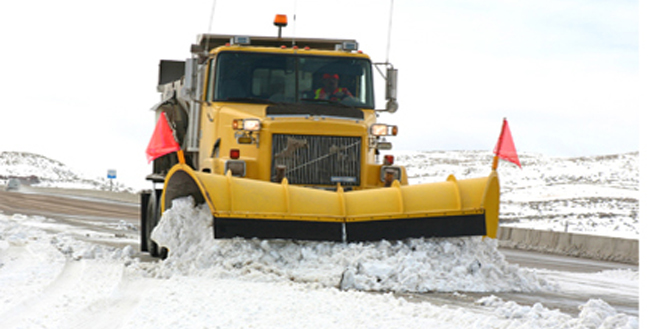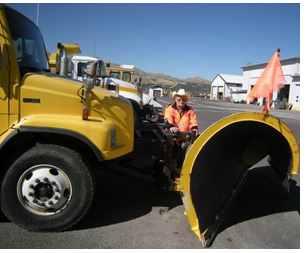

ITD Malad foreman Thorpe again sets ITD road-clearing standard
Several years ago, the Idaho Transportation Department set a goal to keep highways and bridges clear during the slickest roadway conditions. Since then, ITD Malad-area Maintenance Foreman Doug Thorpe (pictured below) has set the statewide standard — twice.
During the last winter season, Thorpe was the top winter performer in the entire state, with a mobility index of 96 percent. This topped the 92 percent he scored the year prior, when he was also the top-ranked performer. 
The mobility index is the percentage of time during winter-weather conditions that a road is in good shape and vehicles are allowed to move freely. ITD’s target is 55-percent mobility during those conditions.
The storm index measures ice duration per unit of storm severity, and it reports how effective crews are during a storm. Using this measure, a lower number is better, and ITD’s target is 0.25.
Thorpe, whose area includes the treacherous Malad Pass, scored a storm index of 0.02. His crew takes care of Interstate 15 as it passes over the Malad Summit. Winters can be severe. The highest road elevation is approximately 5,600 feet and receives significant snowfall.
“A lot of the crew’s success is because of their culture, which has been strongly influenced by Doug’s leadership style,” said ITD District Engineer Ed Bala. “In the Malad shed, communication is really important, and they take maximum advantage of that communicative culture by carefully planning their approach to each storm – and then reviewing it afterward.”
“Doug is unrelenting in his insistence that the crew do its best, and he portrays that insistence in an approachable, easygoing manner,” Bala added.
Thorpe’s crew maintains 203 lane miles, 113 of those on Interstate 15. As an interstate highway, I-15 is his highest-priority roadway. Thorpe’s crew also takes care of 47 miles on Idaho 38 and 43 miles on Idaho 36.
“Of the eight maintenance sheds within District 5, the Malad shed has the smallest crew to maintain their roadways and produces the best mobility during storm events,” said ITD District 5 Operations Manager Steve Gertonson. “The other foreman areas look to Doug and his team as the experts, gaining insight on how they can improve their own operations and provide a higher level of mobility during winter-storm events.”
ITD’s Winter Performance Measures were started in the fall of 2011 to enhance winter maintenance, improve safety and reduce costs. Sensors gather road- and weather-data and automatically identify road-surface grip loss to improve ice-prevention treatments and/or de-icing. A storm-severity index was combined with the time taken for vehicles to recover road grip, in order to give an index figure that guides decisions for winter maintenance.

Through improved precision achieved by the Winter Performance Measures, statewide maintenance costs have fallen from $30 million to $15 million annually. Crashes during winter-driving conditions have been reduced by 27 percent over the most recent three-year period, from a three-year average of 1,256 crashes, to 912.
Published 10-23-15